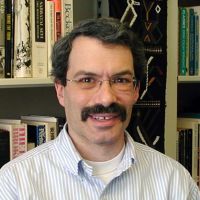We can begin any discussion of President Trump’s ban by noting that there has not been a single attack on American soil by anyone from the seven (six in the revised order) banned countries since 2001, and indeed since 1975. So the debate on the Executive Orders is not a dispute over the relative importance of public safety vs. humanitarian concern for refugees and the value of openness to immigrants from diverse backgrounds. Rather, this is a purely political dispute between advocates of reducing the non-white and non-Christian fraction of the US population and those who oppose religious tests for immigration.
Key figures in the Trump campaign and now Administration have been open in their opposition to immigrants from places besides Western Europe. Stephen Bannon, often described as Trump’s most influential advisor, said on radio in a discussion with Trump, “When two-thirds or three-quarters of the CEOs in Silicon Valley are from South Asia or from Asia, I think.” Bannon didn’t finish that sentence but then continued, “A country is more than an economy. We are a civil society.” Bannon frequently uses the term civil society, but he does not use it in the way Gramsci or Habermas do. Rather, he means a shared culture, one he usually defines in religious terms. At times, Bannon asserts he doesn’t see any culture as superior, just that cultures should be separate and that the US is a European, Christian culture.
Similarly, Attorney General Jeff Sessions has openly praised the 1924 Immigration Act that imposed national quotas on immigration that reflected the supposed origins of US citizens in that year. The 1924 law, combined with the 1882 Chinese Exclusion Act and the 1917 Immigration Act of 1917, which banned immigration from the rest of Asia and the Middle East, ensured that almost all of the sharply reduced annual admissions to the US would come from Europe. The 1924 Act served to block increases in visas for Jews and others fleeing the Nazis.
The Muslim ban can only be understood as a contemporary version of these older, openly racist laws. The ban is an integral part, along with Trump’s pledges to build a wall and to expel undocumented immigrants, of a program to reverse the 1965 Immigration Act which ended national quotas and allowed a more rapid pace of immigration, most of which comes from the world beyond Europe.
We should not be surprised that Trump issued his Muslim ban Executive Order in the first week of his presidency. His false claim that immigrants from those seven Muslim countries are the main source of terrorists served to mark all Muslim and indeed all non-Christian immigrants as dangerous. It reaffirmed his repeated claims during the campaign that Christianity was under siege in the US as well as around the world. If the revised ban stands, Trump will have a precedent he can use to identify other immigrants as dangerous and restrict immigration from elsewhere in the world. Once a nationality, ethnicity or religion is labeled as the source of terrorists, drug dealers or rapists, the next administrative step is to restrict the freedom of people with those identities who already have legal rights to be in the US.
The initial Muslim ban met with powerful resistance. There were demonstrations in many American cities. Lawyers and ordinary Americans flocked to airports where Muslims who had just arrived in the US were being detained. Judges blocked Trump’s Executive Order, and a unanimous Appeals Court panel made clear that it saw no basis for the Order other than anti-Muslim prejudice. It is rare for Federal judges to directly question a president’s claimed justification and unprecedented for them to instead identify prejudice as the motivation of an executive action.
As I write this, it remains unclear whether the revised ban will be overturned in court. So far, popular protests against the new ban are far smaller and quieter than were the ones in late January and early February. The popular and judicial responses to the new ban will be clear indicators of who will oppose the Trump Administration’s vision of an avowedly Christian America, and of how sustained the opposition to that assault on religious freedom and pluralism will be.
Over the past quarter century we heard much talk of America’s ‘soft power.’ That concept asserts that the US could build a global architecture of economic and political cooperation around liberal principals because other nations’ governments and people admired the society that had been built in America, one that provided for a real (and perhaps unequalled) degree of equality of opportunity, upward mobility, equal rights, and protections from arbitrary governmental power. The extreme version of that theory claims that American domestic values also have shaped US foreign policy. The milder and more realistic view is that admiration for America’s domestic accomplishments took attention away from the harsher aspects of US foreign realpolitik.
Any version of soft power is undermined by a president who gives open expression to religious prejudice and by the enshrinement of prejudice in state policy. We can look around the world and see conflicts based on grievances over cruelties practiced decades or centuries earlier. Muslims and indeed anyone who abhors religious discrimination will not forget these bans. Legal and mass resistance can limit the damage Trump can do to the individuals who want to visit or seek refugee in the US. Unfortunately, the message Trump gets to broadcast around the world on a daily basis likely will drown out the voices of tolerance expressed in legal opinions and on the streets.

